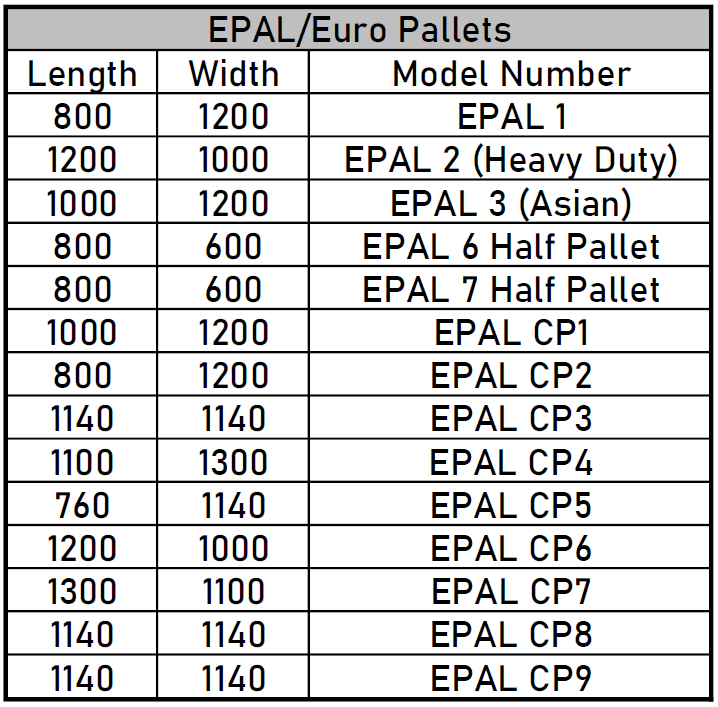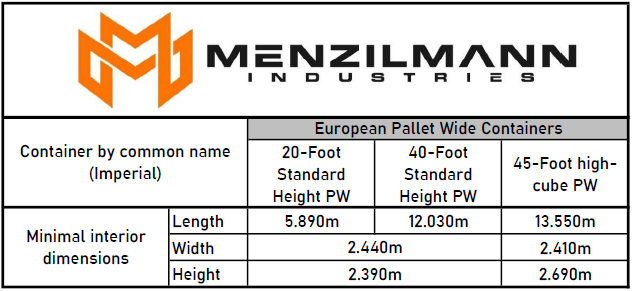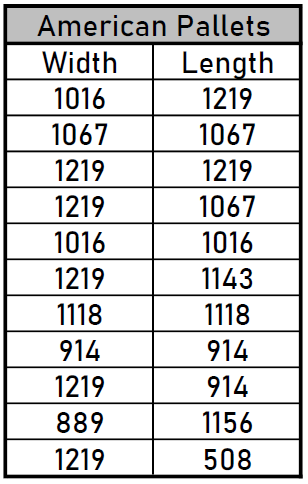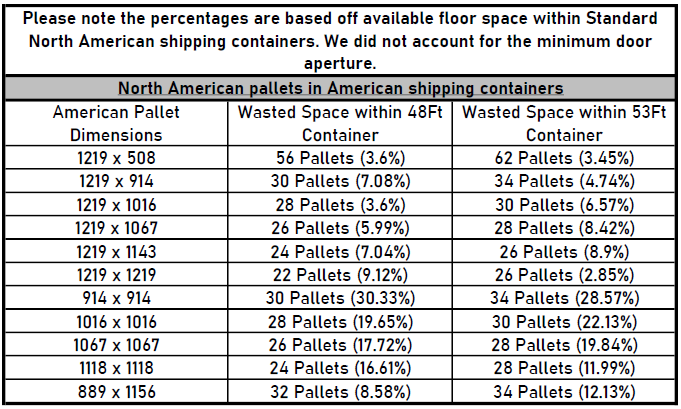What is the standard size for wooden pallets?
This article will cover the standard dimensions commonly used in Europe, South Africa, Australia and North America. It also compares the efficiency of those pallets within the corresponding shipping containers, to allow you to make an informed decision when choosing a wooden pallet dimension. Please view our product page for additional information.
ISO Standard Pallets:
Pallet dimensions continue to exhibit significant variation across different countries, despite notable strides made in standardization and reusability. Such efforts were pivotal due to the rising demands of global trade, prompting the establishment of standardized pallet sizes, as outlined in the ISO Pallet list below.
These are the standard pallet dimensions listed in the ISO standard 6780-2003: Flat pallets for intercontinental materials handling — Principal dimensions and tolerances
Among the myriad pallet sizes in existence, the International Organization for Standardization (ISO) has sanctioned six pallet dimensions, now extensively adopted as global standards. This insight serves as a valuable reference when contemplating exporting goods to foreign destinations, helping mitigate additional costs and time delays associated with transferring goods to local pallets upon arrival. Moreover, it facilitates the calculation of the optimal pallet quantity that can be accommodated within shipping containers:
ISO Standard shipping container dimensions
ISO pallets and ISO container efficiency.
South African Standard:
South Africa does not have a set standard and tends to follow the ISO & European standards. Standard pallet dimensions are usually industry specific with the majority of industries utilising 1200x1000mm pallets for general goods. Chemical manufacturers will utilise 1164x1164mm to 1200x1200mm for 200L Steel drums and 760x1140mm for 50L steel drums (Similar to the European CP5).
European Standard Pallets:
The EUR-pallet, also known as Euro-pallet or EPAL-pallet, is the standard European pallet as specified by the UIC pallet working group and the UIC 435-2 leaflet. Pallets conforming to the standardization are eligible for the European Pallet Pool (EPP), the system which allows for an exchange as "pallet for pallet". EPAL CP Pallets are used exclusively for the European chemical industry.
3 of the Euro Pallet dimensions are listed under the ISO Standard (800x1200mm, 1000x1200mm & 1140x1140mm)
A compiled list of standard Euro Pallets. Follow the link for more information.
These pallets are ill suited for shipping within ISO Containers, thus Europe makes use of PW Containers (European pallet wide Containers):
European pallet wide container dimensions
Euro pallets and European Pallet Wide container efficiency.
Australian Standard Pallets:
Australia has adopted a standard pallet dimension of 1165 x 1165mm. These pallets are perfectly suited for the transportation within RACE Containers (Railways of Australia Container Express) and are ill suited for shipping in ISO shipping containers. The internal width of an ISO shipping container is 2330mm which is equal to the sum of two Australian pallets. This does not account for the door aperture which is slightly narrower than the container’s width, coming in at 2286mm. The Australian Railway system today only accounts for 16.7% of the total goods in transit. The rest is being dominated by trucks. For this reason Australian standard pallets are more commonly used in warehousing and distribution centre rack systems but not for shipping.
American Standard Pallets:
In the 60’s and 70’s the Grocery Manufacturers Association/GMA (recently rebranded as the Consumer Brands Association/CBA) began conversion towards the 1016x1219mm (40 x 48”) standard footprint, which is also recognised by the ISO Standard. Later they established pallet guidelines as a way to streamline food industry transportation, storage and distribution.
List of common North American Pallet dimensions
North American shipping container dimensions
North American pallets and North American shipping container efficiency.
Conclusion:
For the ideal pallet dimensions, please keep in mind the country your goods will be shipped to, client specifications, quantity of goods and what mode of transport will be utlised. If those factors are considered, the above tables will be able to assist with choosing the ideal pallet dimension. We are working on a compiled table listing global standards and other common pallet dimensions and their efficiency with all modes of transportation. The table will be posted here when complete. So please check in regularly.









